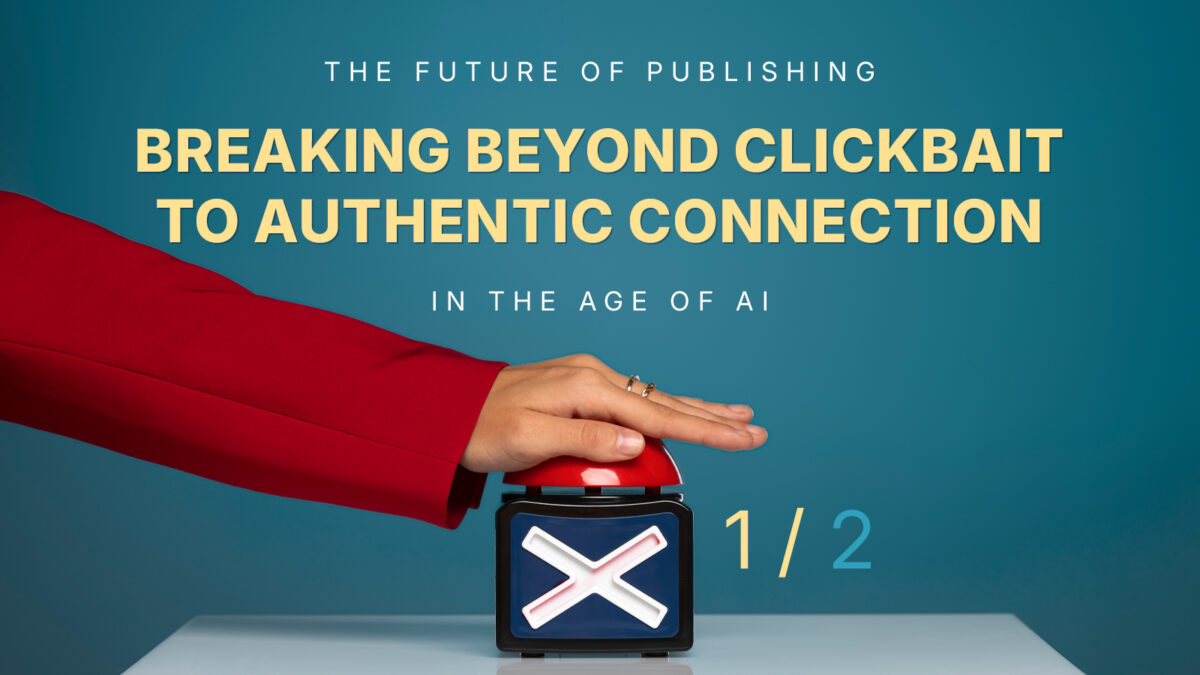The Future of Publishing: Breaking Beyond Clickbait to Authentic Connection in the Age of AI
Publishing has always marched hand-in-hand with technology. Emerging technologies, from the printing press to computers and the internet, have increasingly altered how we tell, share, and consume stories. And yet, as technology doubles and redoubles itself, today’s chaotic media landscape—defined by velocity—is calling for a fundamental rethink of audience engagement approaches.
A Brief Look at Disruption
The printing press was a revolution in democratizing information. Magazines over time were targeting specialized interests, while radio and television transformed media consumption. The internet provided another paradigm-shifting shift. Digital disruption initially led to newspaper classified ad revenue being tapped off to sites like Craigslist and eBay, which caused many publishers to struggle.
The 2008 financial crisis accelerated this transition. Online-born media outlets like BuzzFeed, HuffPost, and VICE then became expert at viral mechanics of social media and algorithms. But there was a cost involved: dependence upon third-party platforms meant that they were in their control. A simple tweak in an algorithm by Facebook or Google would cause their traffic to collapse.
Traditional media soon followed this trend, prioritizing clicks over building loyalty, ultimately eroding brand trust along the way.
Rebuilding Brand and Audience Connections
As the media landscape settles, the survivors of this digital upheaval are returning to effective fundamentals: a strong brand identity, direct relationships with audiences, and strategic tech usage. We’re witnessing the emergence of something new, dubbed Media 3.0.
This phase utilizes immersive storytelling, personalization through AI, and genuine real-world interactions. For digital natives like Gen Z and Gen Alpha, the content must be intimate, engaging, and emotional. They want to be part of the narrative.
Once feared as a killer of jobs, AI is now enabling journalists to concentrate on high-quality storytelling. By automating repetitive work, it frees journalists up to spend time on deep reporting and tailored content curation.
Beyond Pageviews: Building Influence On Traffic
Traditional metrics like pageviews no longer hold water. What counts today is time spent, engagement with the audience, and share of voice. The actual metric of influence is how engaged the content makes one feel.
A publisher today builds equity on trust, editorial standards, and substantive engagement. In a cluttered content cosmos, a publisher with clear values has a solid competitive edge.


